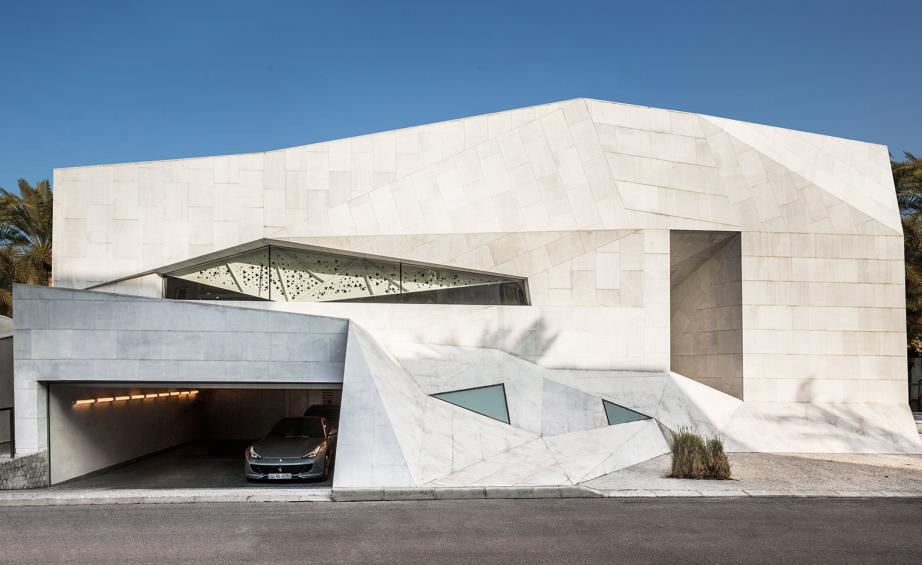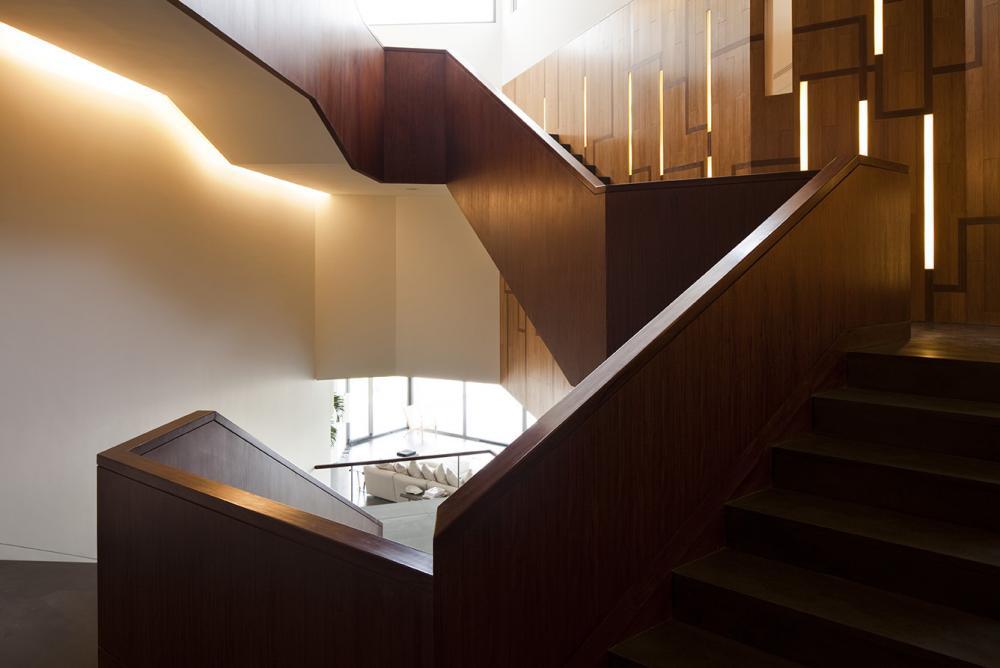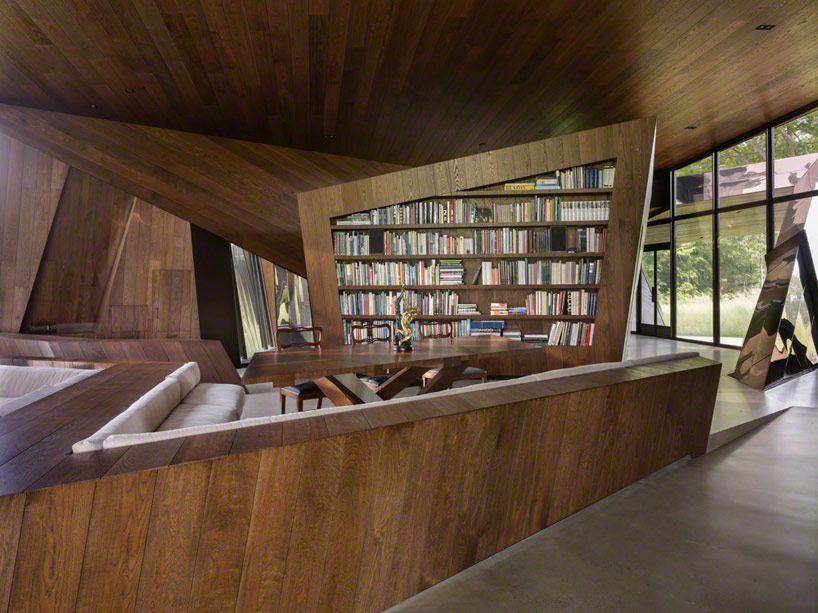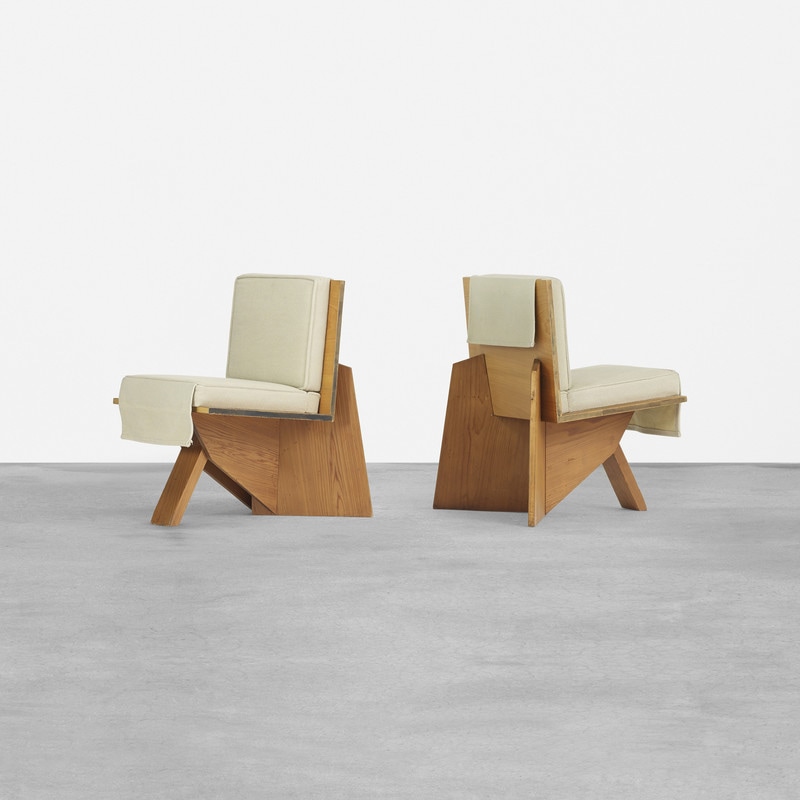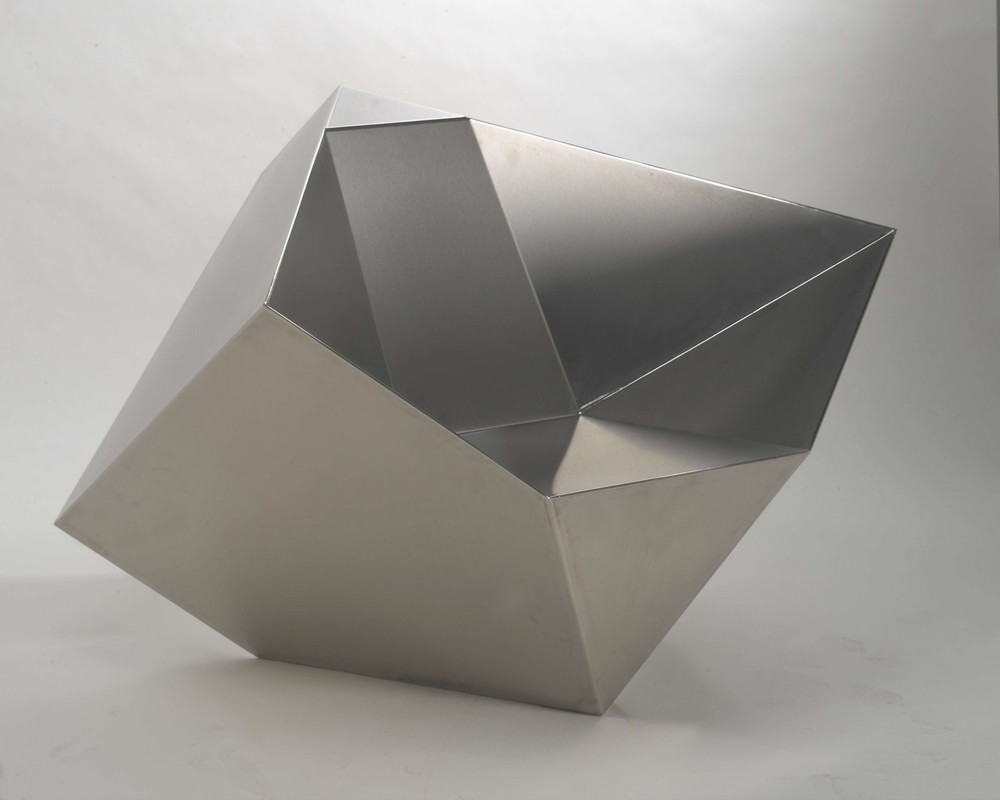We all know that origami is the ancient Japanese art of paper folding. In recent years, the forms have been revisited and the term borrowed when referring to folding masses in architecture and design. It is when flat sheets of such materials as wood, stone, metal, and concrete are transformed through folding. Here are a couple of examples, starting with the recent ‘Origami House in Kuwait City by AGi Architects where the concrete façade has been folded into a sculptural, cubist mass (exterior above; interior below). Architect Daniel Libeskind has adopted the form of the origami in many of his projects, including the Berlin Jewish Museum, his furniture, and the ‘Origami House’ in Western Connecticut; Frank Lloyd Wright’s Usonian furniture, assembled of plywood or inexpensive woods on the building sites by construction workers to the architect’s drawings were nicknamed ‘Origami Furniture’; Tokujin Yoshioka’s Honey-Pop Chair is made of wafer thin sheets of paper; Aranda/Lasch’s chair in foam looks like an origami sculpture; and Zhoujie Zhang’s Heart Chair in metal is an example of digitalized fabrication. Origami enjoys its moment.

